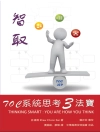To some, the near perfection of the Six Sigma management system appears to be an impossible ideal, especially for small and medium enterprises. FIT SIGMA
TM, a flexible and more sustainable approach, was developed through the integration of the ‘hard’ Six Sigma approach with Lean Enterprise philosophy. It consists of three elements; fitness for purpose, fitness for improvement and integration, and fitness for sustainability.
FIT SIGMA: A Lean Approach to Building Sustainable Quality Beyond Six Sigma shows how this tripartite approach can be used to add value to both large and small organisations through improved use of resources, and through the provision of improved customer satisfaction. It shows that a holistic approach to operational excellence underpinned by a data driven methodology can be applied equally to the manufacturing, service or public sectors.
As the Six Sigma philosophy has evolved in recent years to take into account new challenges faced by companies, including climate change, green supply chain, emerging markets and a growing service sector, so FIT SIGMATM has also adapted itself to these new demands.
FIT SIGMA: A Lean Approach to Building Sustainable Quality Beyond Six Sigma covers key developing areas including:
-
Sustainability and Environment
-
Non-profit organizations
-
Service Operations
-
Supply Chain Management
-
Project Management
-
Emerging Markets
-
Small and Medium Enterprises
-
Green Thinking
Each chapter contains practical implementation guide, illustrative examples and case studies, and concludes with a summary of key elements for ease of reference and revision. In addition the book includes a comprehensive glossary of common terms and phrases used in managing quality, along with an appendix which illustrates the applications of basic statistics in Six Sigma and Fit Sigma.
表中的内容
Preface.
Acknowledgements.
About the Author.
1 The Evolution of Six Sigma, Lean Sigma and FIT SIGMA.
1.1 Introduction.
1.2 First Wave: As Is to TQM.
1.3 Second Wave: TQM to Lean Sigma.
1.4 Third Wave: Lean Sigma to FIT SIGMA.
1.5 More about Six Sigma.
1.6 What is Six Sigma?
1.7 The Structured Approach of Six Sigma.
1.8 What is Lean Sigma?
1.9 More on Lean Sigma.
1.10 Why FIT SIGMA?
1.11 Summary.
2 More about FIT SIGMA.
2.1 Introduction.
2.2 Fitness for the Purpose.
2.3 Sigma for Improvement and Integration.
2.4 Fitness for Sustainability.
2.5 Summary.
3 DMAIC Methodology for FIT SIGMA.
3.1 Introduction.
3.2 DMAIC Full.
3.3 DMAIC Lite.
3.4 Kaizen Event.
3.5 Summary.
4 FIT SIGMA Tools.
4.1 Introduction.
4.2 Tools for ‘Define.’
4.3 Tools for ‘Measure.’
4.4 Tools for ‘Analyse.’
4.5 Tools for ‘Improve.’
4.6 Tools for ‘Control.’
4.7 Summary.
5 FIT SIGMA in Large Manufacturing Operations.
5.1 Introduction.
5.2 Fitness for the Purpose.
5.3 Sigma (Σ) for Improvement and Integration.
5.4 Fitness for Sustainability.
5.5 FIT SIGMA in Supply Chain Management.
5.6 Summary.
6 FIT SIGMA in Service Operations.
6.1 Introduction.
6.2 The Divide Between Service and Manufacturing.
6.3 Objectives of a Service Organisation.
6.4 ‘Fitness for the Purpose’ for Service Organisations.
6.5 ‘Sigma (Σ) for Improvement’ for Service Organisations.
6.6 Fitness for Sustainability.
6.7 Summary.
7 FIT SIGMA in Small and Medium Enterprises.
7.1 Introduction.
7.2 ‘Fitness for the Purpose’ for Small and Medium Enterprises.
7.3 ‘Sigma (Σ) for Improvement’ for Small and Medium Enterprises.
7.4 Fitness for Sustainability.
7.5 Summary.
8 FIT SIGMA in Project Management.
8.1 Introduction.
8.2 FIT SIGMA Principles in Addressing Project Management Objectives.
8.3 FIT SIGMA in a Major Project (High Speed 1).
8.4 Summary.
9 FIT SIGMA in Green Thinking.
9.1 Introduction.
9.2 What is Green Thinking?
9.3 Why FIT SIGMA is Relevant to Green Thinking.
9.4 The Roles of Stakeholders.
9.5 How FIT SIGMA Can Help Green Thinking.
9.6 Green Sigma.
9.7 Summary.
10 Implementation of FIT SIGMA: Making It Happen.
10.1 Introduction.
10.2 Selection of Tools and Techniques.
10.3 Quality Programmes.
10.4 Implementation for New Starters.
10.5 FIT SIGMA for Successful Companies.
10.6 External Consultants.
10.7 Summary.
11 More Case Examples.
11.1 Introduction.
11.2 Case Examples for Large Manufacturing Organisations.
11.3 Case Examples for Services, SMEs, Projects and Green Thinking.
11.4 Summary.
Appendix I Questions and Exercises.
Appendix II Introduction to Basic Statistics.
Appendix III Yield Conversion Table.
References.
Glossary.
Index.
关于作者
RON BASU (Gerrards Cross, UK) is currently a Visiting Executive Fellow at Henley Business School and also a Visiting Professor at ESC Lille. He is Director and founder of Performance Excellence Ltd, a training and consultancy firm specializing in performance management. Previously he held functional and executive roles in Unilever and Glaxo Smith Kline. He was also a Management Consultant with A T Kearney. He is the author of eight books on quality management and supply chain management published through Butterworth Heinemann, Elsevier, Thomson and Reuters. He also published in journals like
International Journal of Production Research, International Journal of Six Sigma and Competitive Advantage, Measuring Business Excellence, Industrial Engineer, Quality World, Project and others. He has completed a Ph D in project quality at Reading University.












